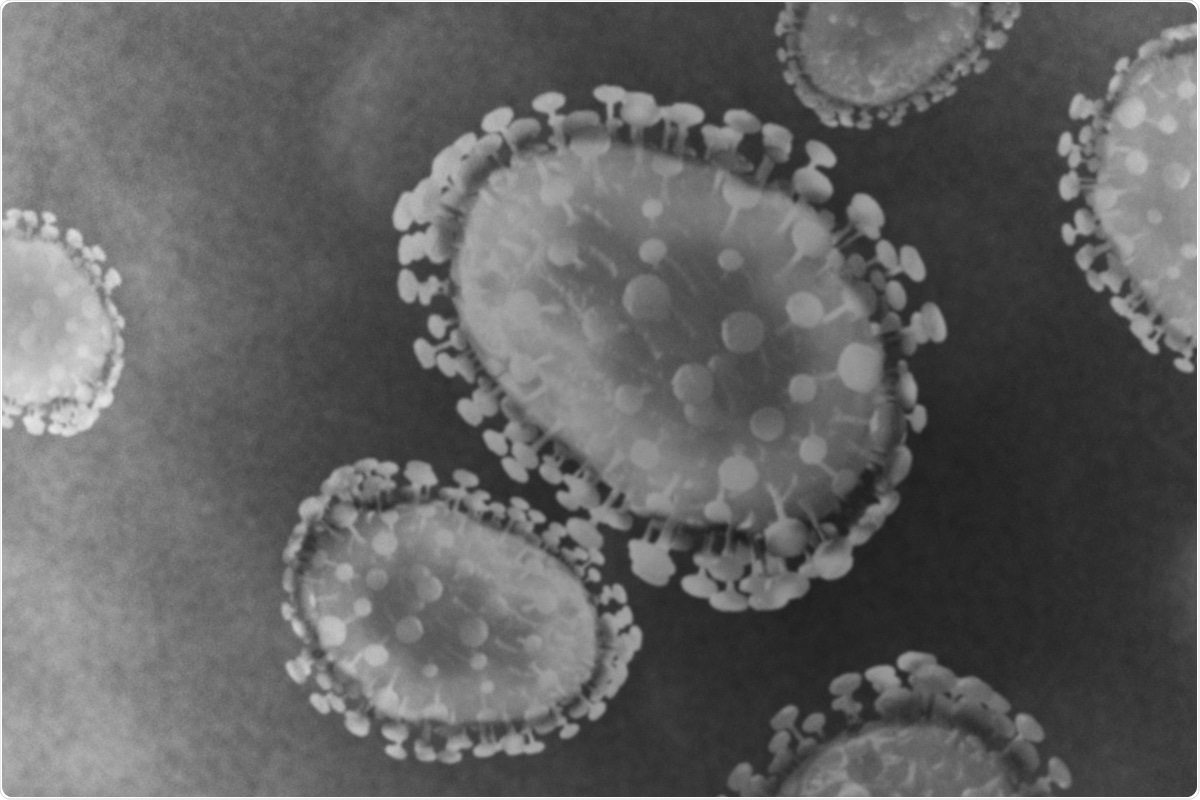A fascinating new Cell Reports Methods study adds to the body of knowledge about the biology of the severe acute respiratory syndrome coronavirus 2 (SARS-CoV-2), the pathogen that causes coronavirus disease 2019 (COVID-19). Using high-throughput confocal super-resolution microscopy, the scientists were able to visualize the structurally similar human coronavirus HCoV-229E.

Study: Multi-Color Super-Resolution Imaging to Study Human Coronavirus RNA During Cellular Infection. Image Credit: CROCOTHERY / Shutterstock.com
Introduction
Seven coronaviruses have proved to be human pathogens. Several of these have caused severe disease, with often-fatal outcomes. The subcellular organization of the viral components in the infected cells, and how these components act within the cell in various compartments, is an integral part of virus biology.
Accordingly, scientists have used multiple approaches to capture this process including genomics, biochemistry, and various high-resolution imaging techniques. This includes cryo-electron microscopy (cryo-EM) and cryo-electron tomography (cryoET), through which scientists have visualized the detailed inner structure of these viruses within the host cell thereby providing visual evidence of their life cycle is fairly well known.
Despite these advancements, the spatial localization of viral ribonucleic acid (RNA) in the infected cell at various stages of the infection largely remains unknown. The actual molecules involved, both host and viral proteins, cannot be identified.
Study findings
In the current study, researchers used a multi-color and multi-scale fluorescence imaging framework to examine these interactions at various stages of viral infection and observe the replicating virus during cell infection.
Furthermore, the scientists tagged the viral RNA, which included both the genomic and the double-stranded RNA (gRNA and dsRNA, respectively). Through these techniques, the researchers visualized the localization of both gRNA and dsRNA at a nanoscale resolution of 20 nanometers (nm).
Both gRNA and dsRNA were organized into three different types of structures, of which included the gRNA clusters, tiny puncta at the nanoscale, and round puncta at intermediate scale. The gRNA clusters are considered virus-induced modifications of the endoplasmic reticulum (ER) called convoluted clusters, which contain up to hundreds of gRNA copies. These clusters grow larger as the infection progresses.
The nanoscale puncta are present throughout the infection, typically discrete from the ER, and appear in both their brightness and size to contain one gRNA copy each. Since viral spike proteins are not colocalized with these punctua, they are unlikely to be virions.
In fact, spike and gRNA are found scattered over the ER membrane. However, the spike protein is embedded in the membrane to be assembled into the virion, whereas gRNA is mostly found within the ER, which is located in the cytoplasm.
Taken together, gRNA appears to cross to the other side for it to bind to the right surface and begin virion assembly. Assembling the virion is a slow process compared with synthesizing viral proteins and gRNA. Moreover, virions are exported fast once they are assembled, which accounts for the failure to detect them within the cell.
“Thus, we believe that the rate-limiting step is the cytoplasmic gRNA finding the nascent virion membrane studded with the required membrane-embedded proteins, a process which is dependent on diffusion as well as on the required RNA-binding proteins.”
The larger dsRNA puncta are likely contained within double-membrane vesicles (DMVs) and increase in number with the progression of infection, but with a constant size distribution. These were not found in association with ER membranes and instead likely represent budding and already formed DMVs.
Interestingly, the dsRNA inside the DMVs escaped labeling by the ER membrane protein label used here, which may indicate that viral infection alters membrane characteristics. Alternatively, the DMVs may be too curved or the membrane too closely packed with viral proteins to allow labeling.
The large gRNA clusters were decorated at the periphery by nanoscale dsRNA but did not colocalize. This could be because these two forms of RNA localize to different compartments for storage. As a result, the gRNA becomes inaccessible to the probes once it hybridizes to form dsRNA.
Another potential explanation is that the intermediate and final forms of the gRNA are stored separately during storage, or that DMVs only contain subgenomic RNA (sgRNA) as dsRNA. A final potential explanation is that active replication occurs at the dsRNA puncta, whereas replicated gRNA moves away from these sites forming gRNA clusters.
The researchers were also able to measure in quantitative terms the response of the virus to antiviral treatment. While remdesivir reduced the signal from both dsRNA and gRNA, it also reduced the size of the large clusters but increased the size of the dsRNA puncta.
“The active RNA replication happens within the convoluted membrane where gRNA forms clusters. DMVs, might be a temporary storage space for RNA replication intermediates before the next virion can be packaged.”
Implications
The findings from the current study demonstrate the benefits of using multicolor fluorescence super-resolution (SR) imaging to understand how viruses interact with host cells at the nanoscale protein level. Though applied here to a seasonal coronavirus, this method can also be used with other coronaviruses, as well as for testing drugs in high-throughput systems.
“Our approach provides a comprehensive imaging framework that will enable future investigations of coronavirus fundamental biology and therapeutic effects. Broadly, we envision that future efforts will apply 3D advanced SR imaging techniques as well as the combination of single-molecule imaging and cryo-electron tomography to simultaneously achieve nanometer resolution and exquisite molecular specificity for virology research.”
Journal reference:
- Wang, J., Han, M., Roy, A. R., et al. (2022). Multi-Color Super-Resolution Imaging to Study Human Coronavirus RNA During Cellular Infection. Cell Reports Methods. doi:10.1016/j.crmeth.2022.100170.